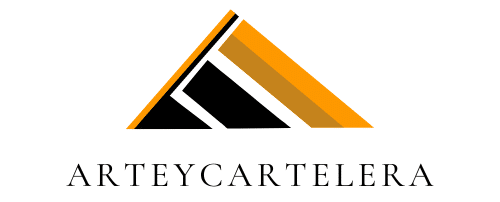What Strategies Can Optimize the UK Gig Economy Workforce Management?

As the UK gig economy continues to grow, it is becoming a more significant component of the country’s workforce. Gig workers offer flexibility and a unique blend of skills that traditional employees often cannot provide. Yet, managing this diverse labor force can pose unique challenges for businesses. Understanding effective strategies for gig workforce management can optimize operations, boost performance, and nurture worker satisfaction.
Understanding the Gig Economy: A New Paradigm for Labor
The gig economy represents a shift in the traditional employment landscape. Instead of full-time, permanent positions, gig workers engage in temporary, flexible jobs. They offer their services on an on-demand basis, often through digital platforms. These platforms connect workers with businesses or individuals in need of specific services.
A lire aussi : What Are the Best Practices for Reducing Cybersecurity Risks in UK Home Offices?
Gig work is not a new concept. However, the rise of digital platforms has significantly expanded its reach and influence. From ride-sharing services to freelance graphic design, gig work encompasses a broad spectrum of sectors and skills.
Successfully managing a gig workforce involves appreciating this diversity. Each worker brings unique talents and requirements to the table. Also, with a gig economy worker, businesses can tap into a wider pool of skills, often at a lower cost than full-time employees.
A découvrir également : How Can UK Educational Publishers Adapt to the Rise of Digital Textbooks?
Strategic Workforce Management in the Gig Economy
Effective workforce management in the gig economy requires a strategic approach. Businesses must balance their needs with those of their workers, ensuring that both parties benefit from the arrangement.
Central to this is the establishment of clear and fair contracts. Gig workers should understand the terms of their employment, including their rights and responsibilities. This clarity promotes trust, a vital ingredient in retaining top talent.
Another crucial strategy is investing in worker development. While gig workers are often highly skilled, they may need additional training to align with a company’s specific needs. Providing this training demonstrates a business’s commitment to its workforce, encouraging worker loyalty and engagement.
Moreover, employing technology can streamline gig workforce management. Digital platforms not only connect businesses to gig workers, but also facilitate communication, scheduling, and payment processes.
The Role of Digital Platforms in Gig Workforce Management
Digital platforms are integral to the gig economy. They serve as a marketplace where gig workers and businesses can connect. The right platform can make it easier for your business to find and manage the talent you need.
However, simply having access to a platform is not enough. Businesses must strategically utilize these tools to optimize their workforce management. This includes using platform features to track worker performance, manage schedules, and facilitate seamless communication.
Customer reviews also play a key role in the gig economy. Platforms often include a rating system, allowing businesses to assess the quality of a worker’s services. This can guide hiring decisions and help businesses maintain high service standards.
Regulations and Worker Rights in the Gig Economy
While the gig economy offers many benefits, it also presents challenges when it comes to worker rights. Traditional labor laws do not always apply to gig workers, creating a potential for exploitation.
It is crucial for businesses to understand their responsibilities towards gig workers. This may involve providing certain benefits, ensuring fair pay, and maintaining safe working conditions. Taking steps to protect worker rights not only fulfills legal obligations but also contributes to worker satisfaction and retention.
In the UK, the government is increasingly recognizing the need for regulation in the gig economy. For example, the recent Supreme Court ruling in the Uber case affirmed that gig workers are entitled to certain rights, such as minimum wage and holiday pay. Staying informed about these legal developments is an essential part of effective gig workforce management.
Cultivating a Positive Company Culture in the Gig Economy
Company culture is not just for traditional workplaces. Even in the gig economy, fostering a positive culture can enhance worker satisfaction and productivity.
This involves treating gig workers as valued members of your team. Businesses should encourage open communication, provide constructive feedback, and recognize worker achievements. Offering opportunities for professional development can also strengthen a positive company culture.
In an environment where gig workers often feel like just another number, businesses that prioritize worker well-being stand out. This promotes worker loyalty, leading to higher service quality and customer satisfaction.
In conclusion, the gig economy is here to stay, and businesses that can effectively manage this evolving workforce will be well-positioned to thrive. By applying strategic workforce management practices, businesses can optimize their operations, improve worker satisfaction, and make the most of the opportunities the gig economy offers.
Leveraging Technology for Advanced Workforce Planning in the Gig Economy
In the evolving gig economy, workforce planning is paramount. It involves anticipating future labour needs and developing strategies to meet these demands. For businesses that rely heavily on gig workers, having an effective workforce planning strategy is not an option, but a necessity.
The advancement in technology has seen the advent of many digital platforms that facilitate this process. These platforms offer a host of functionalities ranging from worker sourcing, performance tracking, and project management. They provide a clear overview of the workforce, helping in decision-making and planning.
A key feature of these digital platforms is the possibility of remote gig work. Through the use of these platforms, businesses can tap into a global talent pool without geographical restrictions. This not only broadens the range of skills available but also offers the flexibility of round-the-clock service provision.
Moreover, the use of technology in workforce planning provides real-time data analysis. From tracking project progress to monitoring worker performance, businesses can get instant insights. This allows for proactive decision making, ensuring optimal utilization of resources.
Case in point, a call centre could leverage these platforms to manage its workforce effectively. With workers across different time zones, it can ensure seamless service provision. Additionally, the use of performance tracking could help in pinpointing workers who excel in lead generation, thus informing decisions on project allocations.
Notably, the use of such platforms requires a level of digital literacy. Businesses must therefore invest in training their workforce on how to use these platforms effectively. According to a recent Google Scholar article, businesses that invest in digital literacy training have reported increased productivity and worker satisfaction.
Gig Economy’s Impact and Future Trends: A Year in Review
Looking back over the year from January to December, the gig economy has seen significant growth. Labour platforms have recorded an increase in users, both for businesses seeking services and individuals offering services. Despite the challenges such as regulatory issues and worker rights, the gig economy’s growth trajectory is expected to continue.
In December and November, the holiday season saw a spike in gig work, especially in sectors such as retail and logistics. This seasonality aspect is an important consideration in workforce planning.
Moreover, the months of September to August saw an increase in demand for gig work in the education sector, with the start of a new academic year. From private tutoring to content creation, the gig economy provided flexible work solutions.
Over the year, businesses have become increasingly aware of the need for strategic gig workforce management. From March to February, for instance, seminars and workshops on gig workforce management increased, indicating an interest in this field.
In conclusion, the future of the gig economy looks promising. With businesses becoming more adept at gig workforce management and technological advancements facilitating this process, the gig economy’s potential is immense. However, it is crucial to address the challenges this presents, particularly in terms of worker rights and regulation. Only with a balanced approach can the gig economy truly thrive. It’s not just about leveraging the benefits that the gig economy offers, but also about creating a fair and sustainable work environment.
